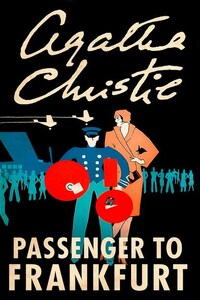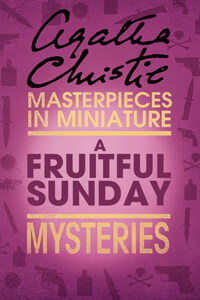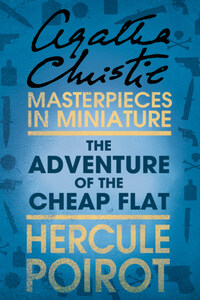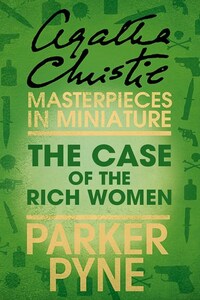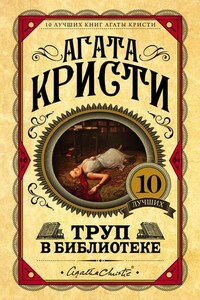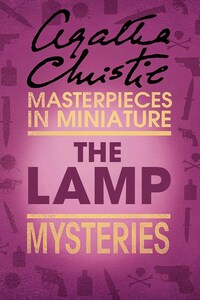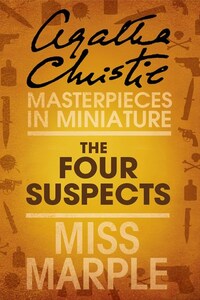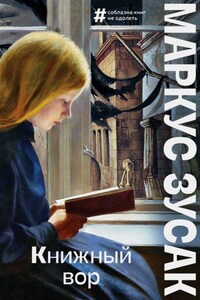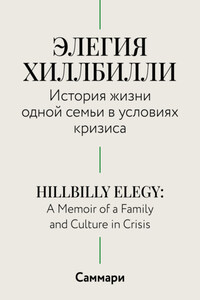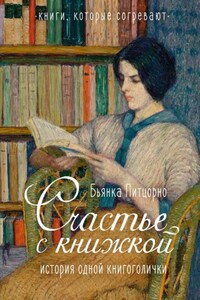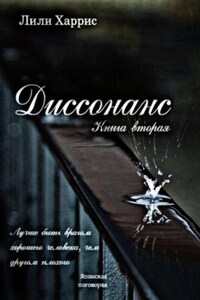Published by HarperCollinsPublishers Ltd
1 London Bridge Street
London SE1 9GF
www.harpercollins.co.uk
First published in Great Britain by Collins, The Crime Club 1970
Passenger to Frankfurt™ is a trade mark of Agatha Christie Limited and Agatha Christie>® and the Agatha Christie Signature are registered trade marks of Agatha Christie Limited in the UK and elsewhere.
Copyright © 1970 Agatha Christie Limited. All rights reserved.
www.agathachristie.com
Cover by designedbydavid.co.uk © HarperCollins/Agatha Christie Ltd 2017
Agatha Christie asserts the moral right to be identified as the author of this work.
A catalogue copy of this book is available from the British Library.
This novel is entirely a work of fiction. The names, characters and incidents portrayed in it are the work of the author’s imagination. Any resemblance to actual persons, living or dead, events or localities is entirely coincidental.
All rights reserved under International and Pan-American Copyright Conventions. By payment of the required fees, you have been granted the non-exclusive, non-transferable right to access and read the text of this e-book on screen. No part of this text may be reproduced, transmitted, down-loaded, decompiled, reverse engineered, or stored in or introduced into any information storage and retrieval system, in any form or by any means, whether electronic or mechanical, now known or hereinafter invented, without the express written permission of HarperCollins.
Source ISBN: 9780008196400
Ebook Edition © March 2017 ISBN: 9780007422685
Version: 2017-04-12
Contents
Cover
Title Page
Copyright
Dedication
Epigraph
Introduction
BOOK I: Interrupted Journey
1. Passenger to Frankfurt
2. London
3. The Man from the Cleaners
4. Dinner with Eric
5. Wagnerian Motif
6. Portrait of a Lady
7. Advice from Great-Aunt Matilda
8. An Embassy Dinner
9. The House near Godalming
BOOK II: Journey to Siegfried
10. The Woman in the Schloss
11. The Young and the Lovely
12. Court Jester
BOOK III: At Home and Abroad
13. Conference in Paris
14. Conference in London
15. Aunt Matilda Takes a Cure
16. Pikeaway Talks
17. Herr Heinrich Spiess
18. Pikeaway’s Postscript
19. Sir Stafford Nye has Visitors
20. The Admiral Visits an Old Friend
21. Project Benvo
22. Juanita
23. Journey to Scotland
Epilogue
Also by Agatha Christie
About the Publisher
The Author speaks:
The first question put to an author, personally, or through the post, is:
‘Where do you get your ideas from?’
The temptation is great to reply: ‘I always go to Harrods,’ or ‘I get them mostly at the Army & Navy Stores,’ or, snappily, ‘Try Marks and Spencer.’
The universal opinion seems firmly established that there is a magic source of ideas which authors have discovered how to tap.
One can hardly send one’s questioners back to Elizabethan times, with Shakespeare’s:
Tell me, where is fancy bred,
Or in the heart or in the head?
How begot, how nourished?
Reply, reply.
You merely say firmly: ‘My own head.’
That, of course, is no help to anybody. If you like the look of your questioner you relent and go a little further.
‘If one idea in particular seems attractive, and you feel you could do something with it, then you toss it around, play tricks with it, work it up, tone it down, and gradually get it into shape. Then, of course, you have to start writing it. That’s not nearly such fun—it becomes hard work. Alternatively, you can tuck it carefully away, in storage, for perhaps using in a year or two years’ time.’
A second question—or rather a statement—is then likely to be:
‘I suppose you take most of your characters from real life?’
An indignant denial to that monstrous suggestion.
‘No, I don’t. I invent them. They are mine. They’ve got to be my characters—doing what I want them to do, being what I want them to be—coming alive for me, having their own ideas sometimes, but only because I’ve made them become real.’
So the author has produced the ideas, and the characters—but now comes the third necessity—the setting. The first two come from inside sources, but the third is outside—it must be there—waiting—in existence already. You don’t invent that—it’s there—it’s real.
You have been perhaps for a cruise on the Nile—you remember it all—just the setting you want for this particular story. You have had a meal at a Chelsea café. A quarrel was going on—one girl pulled out a handful of another girl’s hair. An excellent start for the book you are going to write next. You travel on the Orient Express. What fun to make it the scene for a plot you are considering. You go to tea with a friend. As you arrive her brother closes a book he is reading—throws it aside, says: ‘Not bad, but why on earth didn’t they ask Evans?’
